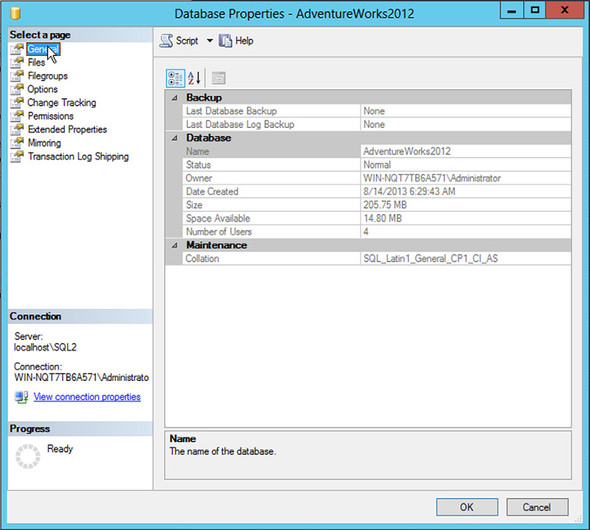Chapter 4. Managing databases
Databases are the basic unit of management and work within SQL Server. A database is an almost entirely self-contained package that bundles security settings, configuration settings, your actual data, and much more. That makes databases a good place to start your education in SQL Server maintenance. Some of the things you’ll look at in this chapter will need a much more complete explanation, which will come in later chapters; the goal right now is to focus on the database container itself. We’ll be covering database configuration options and some basics of how to manage databases.
If you don’t have it open, get SQL Server Management Studio on your screen. Right-click a database, such as AdventureWorks2012, and select Properties. You should be looking at the General page of the Database Properties dialog, as shown in figure 4.1.
There’s not really anything to change on this tab, but it does give you a quick glance at who owns it, when it was last backed up, and how big it is—all useful information. The next page is Files, and this is where we can start assessing database storage. You’ll do that in an upcoming section of this chapter, so just remember where you saw the information. That goes for the Filegroups page as well.
The other main page we need to look at right now is the Options page. Here’s what you should see:
